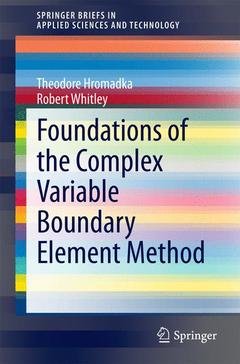Description
Foundations of the Complex Variable Boundary Element Method, 2014
SpringerBriefs in Applied Sciences and Technology Series
Authors: Hromadka Theodore, Whitley Robert
Language: English
Subjects for Foundations of the Complex Variable Boundary Element Method:
52.74 €
In Print (Delivery period: 15 days).
Add to cart80 p. · 15.5x23.5 cm · Paperback
Description
/li>Contents
/li>Biography
/li>Comment
/li>
Dr. Theodore V. Hromadka, II is a Professor of Mathematics at the Department of Mathematical-Sciences at the United States Military Academy, West Point, New York. He has been Principal Engineer and Hydrologist for nearly 15 years at the consulting firm Hromadka & Associates in Rancho Santa Margarita, California. He holds several professional licenses, including Civil Engineer, Geoscientist, Geologist, and holds professional certifications as a Hydrologist for both surface water and groundwater. He has over 40 years of professional engineering experience and has served in various academic and research positions for over 35 years. His publications record includes 375 papers and over 20 books. He has authored more than 30 monographs that have been published by governmental agencies and he has prepared or directed the preparation of project reports and studies for over 1000 studies. He has served as Expert Witness in over 500 Superior Court matters, appearing in over 60 Court trials. He is a Diplomate of the American Academy of Water Resources Engineers and serves on the Board of Directors of the Wessex Institute of Technology in Great Britain. Dr. Hromadka also serves on the Advisory Board of the Department of Civil Engineering at the Untied States Military Academy at West Point. He is Professor Emeritus at the California State University, having served in the Departments of Mathematics, Environmental Studies and Geological Sciences.
Dr. Robert Whitley is a Professor Emeritus of Mathematics at the University of California, Irvine, having taught there and at the University of Maryland for more than 40 years. His publication record includes more than 100 papers in peer reviewed journals and two research level textbooks.
These books may interest you

The Boundary Element Method 210.99 €



